The 1916 dime’s value varies significantly based on mint mark and condition. The 1916-D Mercury dime is the most valuable, with only 264,000 minted, worth thousands even in circulated condition, though authentication is crucial due to counterfeits. The 1916-S Mercury dime offers a more affordable option at $4-$25 depending on condition. The 1916 no mint mark Mercury dime provides good entry-level value for collectors. The 1916 Barber dime (no mint mark) represents the older series, valued between $2-$85 in circulated condition. Unlike other error-prone coins, 1916 dimes are primarily valued for their mint marks rather than minting errors. Professional grading is recommended for high-value pieces, particularly the rare 1916-D.
The year 1916 represents a pivotal moment in American coinage, marking the final production of Barber dimes and the introduction of the legendary Mercury dime series. Understanding the value of 1916 dimes requires careful attention to mint marks and design types, as some specimens command thousands of dollars while others trade for modest premiums. Whether you’ve inherited a collection or discovered an old dime in circulation, this guide breaks down exactly what your 1916 dime is worth.
Understanding the Two Different 1916 Dime Designs
In 1916, the United States Mint produced two entirely different dime designs simultaneously. The Barber dime, designed by Charles Barber and in production since 1892, saw its final year of minting. Meanwhile, Adolph Weinman’s new Mercury dime design was introduced mid-year, creating a unique situation where both designs bear the same date.
The Mercury dime features Liberty wearing a winged cap symbolizing freedom of thought, while the Barber dime shows a more traditional Liberty head profile. This distinction is critical for valuation, as Mercury dimes from 1916 generally command higher prices than their Barber counterparts.
Philadelphia, Denver, and San Francisco mints all produced dimes in 1916, but not every mint struck both designs. The Denver mint, for instance, only produced Mercury dimes in 1916, creating one of the most valuable regular-issue dimes in American numismatic history.
The 1916-D Mercury Dime: The Crown Jewel
With a minuscule mintage of just 264,000 pieces, the 1916-D Mercury dime stands as the key date of the entire Mercury dime series running from 1916 to 1945. This low production figure resulted from the design’s late-year introduction and limited production capacity at the Denver facility.
In circulated condition, authentic 1916-D Mercury dimes command substantial premiums. A Good-4 specimen typically sells for $1,200 to $1,500, while a Fine-12 example ranges from $1,800 to $2,200. Very Fine-20 specimens fetch $2,500 to $3,200, and Extremely Fine-40 coins trade between $4,500 and $5,500.
Uncirculated examples enter serious money territory. An MS-60 specimen starts around $8,000, while MS-63 examples range from $12,000 to $15,000. Gem MS-65 coins command $25,000 to $35,000, and pristine MS-67 specimens have sold for over $100,000 at major auctions.
| Grade | Value Range |
|---|---|
| Good-4 | $1,200 – $1,500 |
| Fine-12 | $1,800 – $2,200 |
| VF-20 | $2,500 – $3,200 |
| EF-40 | $4,500 – $5,500 |
| MS-60 | $8,000 – $10,000 |
| MS-63 | $12,000 – $15,000 |
| MS-65 | $25,000 – $35,000 |
The authentication challenge with 1916-D Mercury dimes cannot be overstated. Counterfeiters frequently add fake “D” mint marks to common 1916 Philadelphia dimes or alter dates on more common Denver Mercury dimes from other years. Professional third-party grading from PCGS or NGC is essential for any 1916-D purchase, particularly given the coin’s value threshold. Genuine examples show specific mint mark punch characteristics that experts can verify under magnification.
The 1916-S Mercury Dime: Affordable Alternative
The San Francisco mint produced 10,450,000 Mercury dimes in 1916, making this issue significantly more accessible than its Denver counterpart. While not rare in absolute terms, the 1916-S remains a first-year issue with solid collector demand.
Circulated examples offer entry points for budget-conscious collectors. Good-4 specimens sell for $4 to $6, Fine-12 examples range from $8 to $12, Very Fine-20 coins trade at $15 to $22, and Extremely Fine-40 pieces command $35 to $50. These represent reasonable premiums over silver melt value while still providing historical significance.
Uncirculated 1916-S Mercury dimes show steeper price increases. MS-60 examples start at $125 to $175, MS-63 specimens range from $275 to $375, and MS-65 gems command $850 to $1,200. Full Bands designation, indicating complete separation of the horizontal bands on the reverse fasces, adds 50 to 100 percent to these values.
The 1916-S serves as an excellent substitute for collectors building Mercury dime sets who cannot justify the expense of a 1916-D. It carries the same first-year cachet and historic significance at a fraction of the cost.
The 1916 No Mint Mark Mercury Dime
Philadelphia struck 22,180,080 Mercury dimes in 1916 without mint marks, making this the most common variant of the series’ inaugural year. Despite higher production numbers, these coins still represent the first year of an iconic design.
Worn examples remain affordable. Good-4 specimens sell for $3 to $5, Fine-12 examples range from $6 to $9, Very Fine-20 coins trade at $12 to $18, and Extremely Fine-40 pieces command $28 to $42. These prices exceed silver content value by moderate margins, reflecting collector demand for dated sets.
Mint state examples show substantial premiums. MS-60 pieces start at $95 to $140, MS-63 specimens range from $225 to $325, and MS-65 gems command $650 to $900. Full Bands examples in MS-65 grade can reach $2,500 to $3,500, demonstrating how technical details affect valuation.
The no mint mark 1916 Mercury dime provides an accessible entry point for collectors wanting to own a piece of American numismatic history without significant financial commitment. Its relatively high mintage ensures availability across all grade levels.
Barber Dimes from 1916
The Barber dime series concluded in 1916, with Philadelphia and San Francisco producing final-year examples. These coins appeal to collectors completing the Barber series rather than Mercury dime enthusiasts, creating a separate market dynamic.
The 1916 Philadelphia Barber dime, struck to the tune of 18,490,000 pieces, shows modest values in circulated condition. Good-4 examples sell for $2 to $3, Fine-12 specimens range from $5 to $8, Very Fine-20 coins trade at $15 to $25, and Extremely Fine-40 pieces command $45 to $65. Uncirculated examples jump significantly, with MS-63 specimens selling for $225 to $350 and MS-65 gems reaching $850 to $1,400.
The 1916-S Barber dime, with 5,820,000 minted, carries slightly higher premiums. Good-4 examples sell for $3 to $4, Fine-12 specimens range from $7 to $11, Very Fine-20 coins trade at $20 to $32, and Extremely Fine-40 pieces command $55 to $85. MS-63 examples sell for $350 to $550, while MS-65 gems command $1,200 to $2,000.
Collectors should carefully distinguish between Barber and Mercury designs when evaluating 1916 dimes. The design difference significantly impacts value, particularly in lower grades where a Barber dime might sell for $5 while a Mercury dime from the same year and condition commands $15.
Error Varieties and Doubled Dies
Unlike some coin series where errors drive significant premium value, 1916 dimes lack widely recognized major error varieties that command substantial premiums. The primary focus for 1916 dime values remains mint marks and condition rather than manufacturing anomalies.
Minor doubled die varieties exist on both Barber and Mercury dimes from 1916, but these typically add only modest premiums of 10 to 25 percent over standard values in equivalent grades. No spectacular doubled dies comparable to famous examples like the 1955 doubled die cent have been documented for 1916 dimes.
Off-center strikes occasionally appear, particularly for Mercury dimes. A 10 percent off-center strike might add $50 to $150 to a common date Mercury dime in circulated condition, while a 30 percent off-center example could command $200 to $400. Full off-center strikes showing complete dates remain rare and potentially valuable.
Repunched mint marks appear on some 1916-S specimens of both designs. These show doubling or tripling of the “S” mint mark and typically add 15 to 30 percent premiums in mid-grade circulated condition. Collectors should verify these with magnification, as die polishing can create false appearances of repunching.
The relative scarcity of valuable error varieties means collectors should focus authentication efforts on verifying genuine mint marks rather than searching for errors. A genuine 1916-D Mercury dime in any condition vastly outweighs the value of any error variety on a Philadelphia or San Francisco specimen.
Authentication and Grading Considerations
Professional third-party grading becomes essential for high-value 1916 dimes, particularly any specimen purporting to be a 1916-D Mercury dime. PCGS and NGC authentication provides certainty about mint mark authenticity and protects against the numerous counterfeits in the marketplace.
Examine the “D” mint mark on suspected 1916-D Mercury dimes with particular scrutiny. Genuine examples show specific punch characteristics including serif shapes and positioning relative to the rim and wreath. Added mint marks typically show irregular edges under magnification or incorrect positioning compared to documented authentic examples.
Strike quality varies significantly among 1916 Mercury dimes. Philadelphia issues generally show stronger strikes than San Francisco specimens, while Denver coins show the most variation due to die adjustment issues during the design’s initial production. Full Bands designation requires complete separation of all horizontal bands on the reverse fasces, a detail often weak on 1916-S examples.
Surface preservation dramatically affects values in mint state grades. Original luster, lack of cleaning, and absence of contact marks separate MS-63 coins from MS-65 specimens. Toning patterns should appear natural and even rather than artificial or spotted, which suggests chemical treatment or environmental damage.
Building Your Collection Strategy
Starting a 1916 dime collection requires strategic planning based on budget and objectives. Collectors working with limited funds should begin with circulated examples of Philadelphia and San Francisco Mercury dimes, establishing the foundation of a dated set before pursuing the expensive 1916-D.
Mid-range collectors might target Extremely Fine to About Uncirculated grades for common dates while allocating larger budgets toward lower-grade 1916-D specimens. A VF-20 1916-D paired with AU-50 examples of other dates creates a balanced set demonstrating the series without requiring five-figure investments in single coins.
Advanced collectors pursuing registry sets should focus on certified examples with strong eye appeal. Full Bands designation adds significant premiums but creates museum-quality specimens. Premium quality MS-65 Full Bands examples of common dates often represent better values than lower-grade 1916-D coins for building impressive collections.
Barber dime collectors face different considerations, as 1916 represents a final-year date rather than a beginning. Completing a Barber set requires both Philadelphia and San Francisco 1916 examples, but neither carries the premium of Mercury dimes from the same year.
Where to Sell Your 1916 Dimes
Heritage Auctions and Stack’s Bowers regularly handle high-grade 1916-D Mercury dimes, with major specimens appearing in their flagship auctions. A PCGS MS-66 Full Bands example sold for $78,000 through Heritage in 2023, while an NGC MS-67 specimen reached $132,000 in a Stack’s Bowers sale the same year.
For mid-range specimens, established coin dealers specializing in classic United States coins provide fair markets. Expect wholesale offers ranging from 70 to 85 percent of retail values depending on grade and demand. Dealers need profit margins but offer immediate liquidity without auction waiting periods or fees.
Online marketplaces including eBay provide access to retail buyers but require careful photography, accurate descriptions, and realistic pricing. Successfully selling high-value 1916-D specimens online requires building buyer confidence through detailed images and clear return policies. Consider professional grading before listing to maximize buyer interest.
Local coin shops offer convenience for common-date 1916 dimes but rarely pay premium prices for key dates. Use local dealers for quick sales of circulated common dates while directing valuable specimens toward specialists or major auctions where appropriate buyers congregate.
Maximizing Your 1916 Dime Investment
Purchase the highest grade affordable within your budget rather than accumulating multiple lower-grade examples. A single MS-63 1916 Philadelphia Mercury dime typically appreciates more consistently than three circulated specimens of equivalent total cost. Quality concentration builds more valuable collections than quantity accumulation.
Certification protects both authenticity and grade accuracy while enhancing resale liquidity. The $30 to $40 cost of PCGS or NGC grading pays dividends on coins worth $200 or more by eliminating buyer skepticism and enabling participation in online markets where certification has become standard.
Monitor auction results through Heritage Archives and Stack’s Bowers price databases to track market movements. The 1916-D Mercury dime shows particularly strong performance during periods of precious metals strength and economic uncertainty. Broader Mercury dime series values correlate with silver prices while key dates maintain premiums during all market conditions.
Store coins properly in inert holders away from environmental contaminants. Original mint luster preservation maintains grade integrity and prevents artificial toning that reduces values. Climate-controlled storage in non-PVC holders protects long-term condition and investment value.
You may be interested:
- 1859 Indian Head Penny Coin Value Complete Errors List And No Mint Mark Worth Guide For Collectors
- 1911 V Nickel Coin Value Guide Complete Errors List And No Mint Mark Worth Today
- 1902 Dime Coin Value Complete Errors List With O S And No Mint Mark Worth Guide
- 1788 Quarter Coin Value Complete Guide Errors List And D S P Mint Mark Worth Revealed
- 1776 To 1976 Bicentennial Half Dollar Coin Value Complete Errors List And What Your D S And No Mint Mark Coins Are Actually Worth
- 1990 Penny Coin Value Errors List How D S And No Mint Mark Pennies Are Worth Thousands Of Dollars

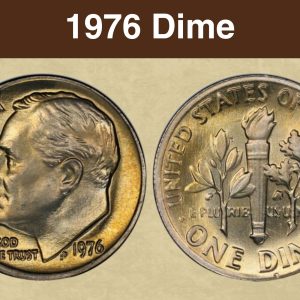
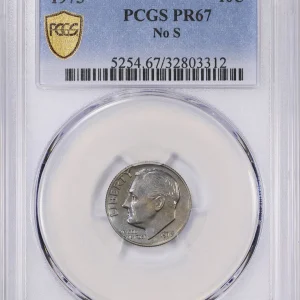
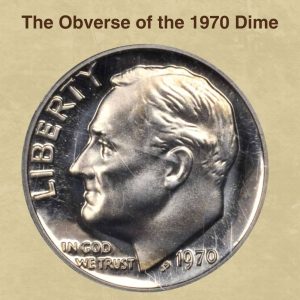
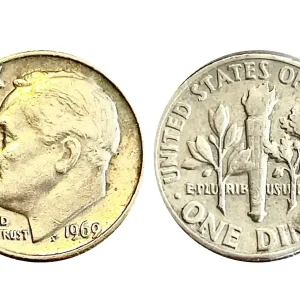
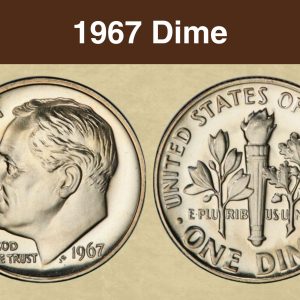
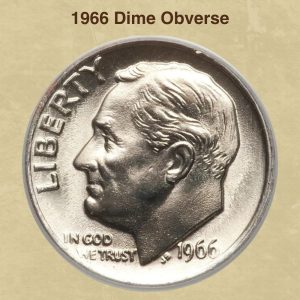
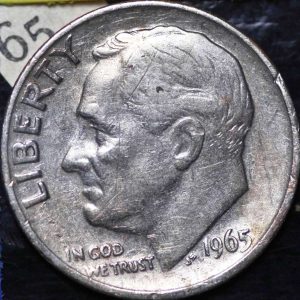
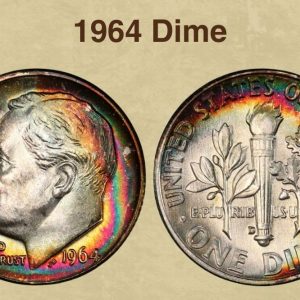
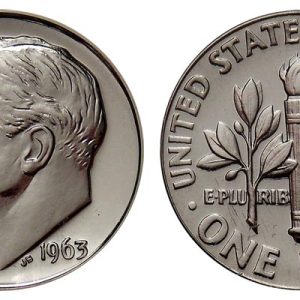
How much is a 1916 S Mercury dime worth?
A 1916-S Mercury dime’s value ranges from about $10–$75 in circulated condition to as much as $5,000 or more for high-grade, uncirculated examples. The final price depends heavily on the coin’s condition, with a “full split bands” designation adding significant value.
What makes a 1916 dime valuable?
Among Mercury dimes no issue is more famous or more eagerly sought than the 1916-D. The mintage of 264,000 pieces is far and away the lowest among circulation strikes of this type.
Where’s the mint mark on a 1916 Mercury dime?
On a 1916 Mercury dime, the mint mark is located on the reverse (tails side) of the coin, to the right of the letter “E” in the word “ONE,” nestled below the stem of the olive branch. The mint mark is a tiny letter representing the mint location: a “D” for Denver, an “S” for San Francisco, or no mark for Philadelphia.
What are the rarest Mercury dimes?
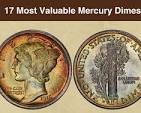 The rarest Mercury dime is the `1916-D` , with a mintage of only 264,000, making it the key date of the series.Other rare dates include the 1921 and 1921-D Mercury dimes, as well as the 1942/41 overdate variety, which is highly sought after by collectors.[[1]](https://www.rarecoinwholesalers.com/mercury-dimes-38#:~:te…